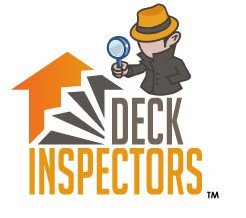The safety and structural integrity of decks, balconies, and other elevated exterior elements are crucial for multifamily properties. California Senate Bill 326 (SB 326) was introduced to address these concerns, requiring routine inspections of elevated exterior elements (EEEs) in multifamily residential buildings. Navigating these requirements can seem overwhelming for property owners and homeowner associations (HOAs). This guide breaks down the essential aspects of SB 326 inspections and offers practical steps to ensure compliance.
What Are SB 326 Inspections?
SB 326 inspections identify safety hazards in EEEs, including balconies, decks, walkways, and stairways supported by wood-based framing. These components are vulnerable to water damage, rot, and structural wear, especially in California’s diverse climate. The law mandates that EEEs in multifamily residential buildings with three or more units undergo inspections at least once every six years.
A key provision of SB 326 requires that a minimum of 15% of each type of EEE be inspected. This ensures a representative sample without imposing excessive costs. The inspections must be performed by licensed professionals with relevant expertise, such as architects, structural engineers, or general contractors.
The findings from SB 326 inspections must be documented in a detailed report, including the condition of the elements, any observed deficiencies, and recommendations for maintenance or repairs. These reports ensure safety and compliance and protect property owners from potential liability.
How To Prepare
1. Understand the Scope of the Law
Before scheduling an inspection, familiarize yourself with SB 326’s requirements. This includes understanding which components of your property fall under the scope of the law and ensuring you meet the inspection deadlines. For HOAs, it’s also essential to budget for these inspections and any potential repairs.
2. Hire Qualified Inspectors
Not all inspectors are created equal. To meet SB 326 requirements, hire a licensed professional with experience in evaluating EEEs. Qualified inspectors will assess key components such as wood framing, waterproofing systems, and connection points for signs of wear, damage, or deterioration.
3. Address Deficiencies Promptly
If deficiencies are identified during the inspection, prompt action is essential. SB 326 mandates inspections and emphasizes timely maintenance and repairs to mitigate safety risks. Common repairs include sealing leaks, replacing damaged wood, and reinforcing structural connections.
4. Keep Detailed Records
SB 326 requires HOAs to maintain inspection reports and documentation of completed repairs for at least two inspection cycles (12 years). A well-organized record-keeping system ensures you’re prepared for audits or disputes and demonstrates your commitment to compliance and safety.
Why SB 326 Is Critical
SB 326 inspections go beyond compliance to ensure the safety and well-being of residents. Regular inspections help identify hidden hazards before they escalate, preventing accidents and preserving the structural integrity of your property.
Moreover, proactive maintenance driven by inspections can reduce long-term repair costs and enhance property value. For HOAs and property managers, meeting SB 326 requirements also reduces legal liability, protecting against potential claims resulting from neglected maintenance.
By partnering with experienced inspectors and prioritizing regular upkeep, you can confidently navigate SB 326 inspections. Schedule an inspection today to ensure your property’s safety and compliance and safeguard your residents and investment for years.
Click here to get in contact with an expert from Deck Inspectors today!
Deck Inspectors for Southern California is happy to offer our services in Los Angeles County, Riverside County, Orange County as well as San Diego County and all Southern California surrounding areas like: Los Angeles, Irvine, Long Beach, La Jolla, Glendale, Pasadena, Santa Ana, Huntington Beach, Dana Point, Burbank, Santa Monica, Anaheim, Temecula, Encinitas, Chula Vista, Vista, Mesa, San Diego, Oceanside, Escondido, Carlsbad, Poway, Mission Viejo, and El Cajon.



